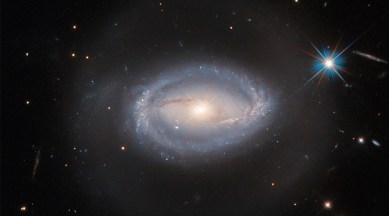Hubble spots difficult to classify distant celestial object
The Hubble Space Telescope has spotted an object 390 million light-years away, and it is diffcult to classify.

In the infinite reaches of space, there are probably many different celestial objects that defy the classifications humans have made for them. The Hubble telescope has found another such object.
In the above image, you can see Z 229-15, a celestial object that is about 390 million light-years away from our planet in the constelation Lyra. According to the European Space Agency, this is an interesting celestial object that can be defined as several different things.
monthly limit of free stories.
with an Express account.
Depending on how you look at it, it can be an active galactic nucleus (AGN), sometimes it is a quasar, and sometimes it is a Seyfert galaxy. But how is that possible? It is because the definitions for each of these have a significant overlap.
AGN is the name given to the extremely bright central region of a galaxy that is far brighter than just the galaxy’s stars would be. This extra brightness is usually due to the presence of a supermassive black hole at the galaxy’s core.
When material is attracted by a black hole’s gravity, it does not fall directly into it. Instead, it is sucked into a swirling “accretion disc,” from where it is eventually inevitably pulled into the black hole. This accretion disc gets so hot that it releases electromagnetic energy across the spectrum, making AGNs so bright.
Quasars are a particular type of AGN. Typically, they are both extremely bright and extremely distant from Earth. Despite being several hundred light-years away from our planet, Z 229-15 is considered nearby for a quasar.
Sometimes, when an AGN is so bright, the rest of the galaxy cannot be seen. But Seyfert galaxies are those that host very bright quasars while the rest of the galaxy is still observable.
In essence, Z 229-15 is a Seyfert galaxy. A Seyfert galaxy that hosts a quasar. And quasars are by definition, a kind of AGN. That is how the celestial object can be all three things at once.